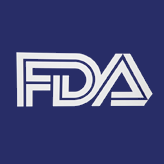FDA Approves First Biosimilar, Filgrastim-sndz (Zarxio)
The US Food and Drug Administration has approved filgrastim-sndz (Zarxio), a biosimilar of filgrastim (Neupogen), and the first such agent to be approved in the United States.
This is the first biosimilar approved by the FDA

The US Food and Drug Administration (FDA) has approved filgrastim-sndz (Zarxio; Sandoz), a biosimilar of filgrastim (Neupogen; Amgen), and the first such agent to be approved in the United States.
Rather than chemically derived, biologic products come from living sources such as animals, humans, yeast, or microorganisms. The difference between the formulation of the two agents is in one inactive component. The recommended dose and treatment schedule are the same for both drugs.
“Biosimilars will provide access to important therapies for patients who need them,” said FDA Commissioner Margaret A. Hamburg, MD, in a press release. “Patients and the health care community can be confident that biosimilar products approved by the FDA meet the agency’s rigorous safety, efficacy, and quality standards.”
In January, the FDA’s independent Oncologic Drugs Advisory Committee endorsed this biosimilar by a 14-to-0 vote, paving the way for approval.
Approved with the same indications as filgrastim, which was first approved in 1991, the new drug is intended for patients with severe chronic neutropenia; cancer patients receiving myelosuppressive chemotherapy, undergoing bone marrow transplantation, or receiving autologous peripheral blood transplantation; acute myeloid leukemia (AML) patients on induction or consolidation chemotherapy; and patients receiving progenitor cell therapy.
The approval of the filgrastim biosimilar is based on several clinical trials that demonstrated the pharmacodynamic and pharmacokinetic similarities of filgrastim-sndz and filgrastim. Patients were treated with the two agents subcutaneously at doses of 1–10 mcg/kg.
The safety profile of filgrastim-sndz is similar to that of filgrastim. Data were evaluated in 418 patients, which included healthy subjects (n = 204) and breast cancer patients (n = 214) on chemotherapy.
The most common adverse events of filgrastim-sndz are musculoskeletal pain, muscle redness, and swelling or itching at the site of injection, all of which were expected. Serious adverse events include spleen rupture and allergic reactions that may cause fast pulse and sweating, shortness of breath, wheezing, rash, and swelling of the mouth or eyes. Another serious allergic reaction observed in patients on filgrastim-sndz is acute respiratory distress syndrome.
The name for the new agent, filgrastim-sndz, is a placeholder name. The FDA has yet to issue guidance on the naming of future biosimilars, but plans to do so soon.
Oncology Peer Review On-The-Go: Cancer-Related Fatigue Outcome Measures in Integrative Oncology
September 20th 2022Authors Dori Beeler, PhD; Shelley Wang, MD, MPH; and Viraj A. Master, MD, PhD, spoke with CancerNetwork® about a review article on cancer-related fatigue published in the journal ONCOLOGY®.